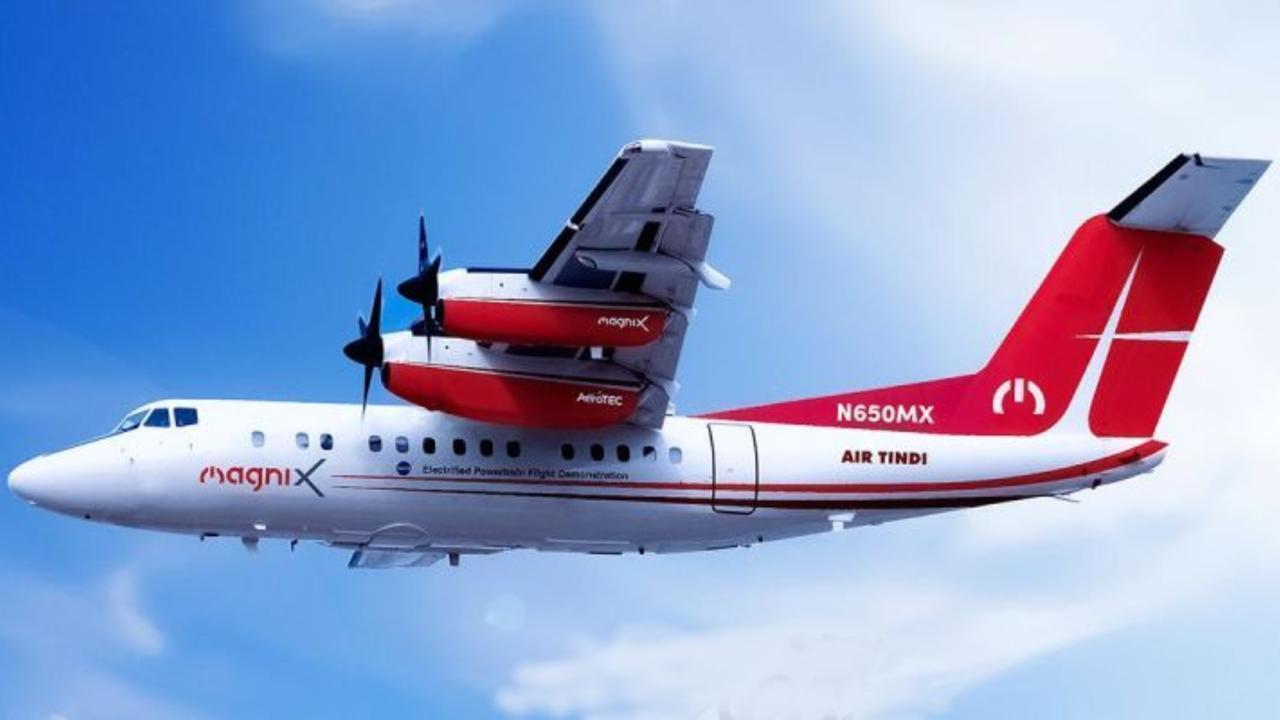
Post by : Amit
Photo: Linkdin/MagniX
Electric aviation, once seen as a distant dream, is fast becoming reality—and one of the key players driving this transformation is Everett, Washington-based MagniX. The company, known for its cutting-edge electric propulsion systems, has set its sights on continuing its partnership with NASA to push the boundaries of electric flight.
With the aviation industry under pressure to reduce its carbon footprint, the race is on to develop cleaner, quieter, and more efficient ways to power aircraft. MagniX, a pioneer in electric propulsion, is at the heart of this race. The company has been working with NASA’s Electrified Powertrain Flight Demonstration (EPFD) project, which aims to mature electric aircraft technology and prepare it for real-world use by the 2030s.
The Next Chapter in Electric Flight
MagniX is bidding to win a continuation of its NASA contract, which could significantly advance electric propulsion for regional aircraft. The next phase of this partnership will focus on flight-testing the company’s magni650 electric propulsion unit (EPU), designed to power smaller, regional aircraft with zero emissions.
The magni650 is a powerful and lightweight electric motor that could help transform short-haul aviation by slashing emissions, lowering operating costs, and reducing noise. MagniX hopes that through rigorous testing and refinement under NASA’s guidance, its technology will move closer to commercial certification.
“The goal is to develop propulsion systems that not only meet environmental goals but also make economic sense for airlines,” said Reed Macdonald, MagniX’s CEO. “We’re excited to continue pushing the envelope with NASA to make electric aviation a reality.”
NASA’s Bold Vision for Electric Planes
NASA’s EPFD project is a key part of the U.S. government’s plan to lead the global transition to sustainable aviation. The agency aims to have electrified aircraft operating commercially by the early 2030s, with the potential to reduce fuel consumption and emissions by up to 30% compared to today’s planes.
NASA has already awarded multiple contracts under the EPFD program to various aviation innovators, with MagniX standing out due to its practical progress in developing and testing electric propulsion systems.
One of MagniX’s major milestones includes successfully flying an all-electric Cessna Grand Caravan and a retrofitted De Havilland Beaver—both powered by its electric motors. These early test flights have demonstrated that electric aviation is not just a theory but a practical solution that is taking off.
Why Electric Aviation Matters Now
The aviation sector is responsible for roughly 2-3% of global carbon emissions, and while this might sound small, the industry’s emissions are growing faster than many others. Electric propulsion is seen as one of the most promising solutions for cutting emissions, especially for short-haul and regional flights that make up a significant share of global air travel.
Electric planes could also revolutionize the economics of flight. By eliminating the need for costly jet fuel and simplifying maintenance (electric motors have fewer moving parts), airlines could see dramatic reductions in operating expenses. Additionally, electric aircraft produce far less noise, making them ideal for operations near urban areas.
MagniX faces stiff competition in the race to electrify aviation, with big names like GE Aviation, Rolls-Royce, and startups like Heart Aerospace also chasing the same goal. But MagniX’s early lead in flying real, all-electric aircraft gives it a strong advantage.
The company is now working closely with the FAA (Federal Aviation Administration) to achieve certification for its electric propulsion systems—a crucial step before these planes can carry paying passengers.
As MagniX eyes the next phase of NASA's program, the team remains optimistic. If all goes well, electric-powered planes could be a common sight in the skies by the next decade—offering cleaner air, quieter airports, and a greener planet.
For MagniX and the entire aviation industry, the message is clear: the future is electric, and it’s taking off faster than anyone imagined.
NASA, Flying Taxi










Bengaluru-Mumbai Superfast Train Approved After 30-Year Wait
Railways approves new superfast train connecting Bengaluru and Mumbai, ending a 30-year demand, easi

Canada Post Workers Strike Halts Nationwide Mail and Parcel Services
Canada Post halts operations as CUPW strike disrupts mail and parcel delivery nationwide amid disput

PM Modi Launches BSNL ‘Swadeshi’ 4G Network, 97,500 Towers Built
India enters global telecom league as PM Modi inaugurates BSNL’s indigenous 4G, connecting 26,700 vi

India’s Iconic MiG‑21 Takes Final Flight After Six Decades of Service
After 60 years India retires its MiG‑21 fighter jet, a legendary yet controversial warplane marking

Hindustan Zinc unveils AI hotspot monitoring at Debari smelter
Hindustan Zinc launches AI-powered Switchyard Hotspot Monitoring at Debari smelter to cut outages bo

Chinese experts worked inside sanctioned Russian drone plant
Chinese drone specialists visited IEMZ Kupol supplying parts and drones via intermediaries, deepenin